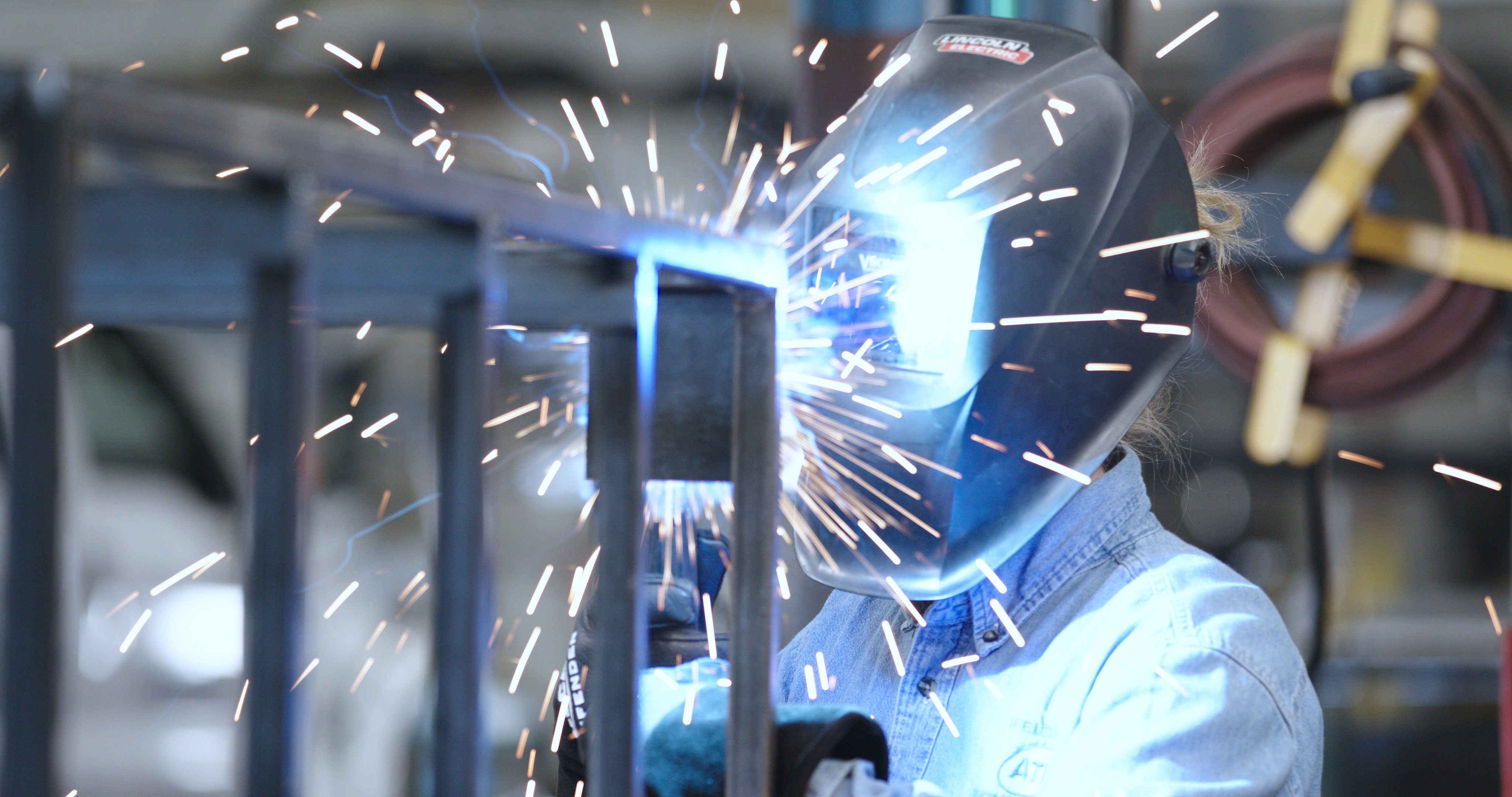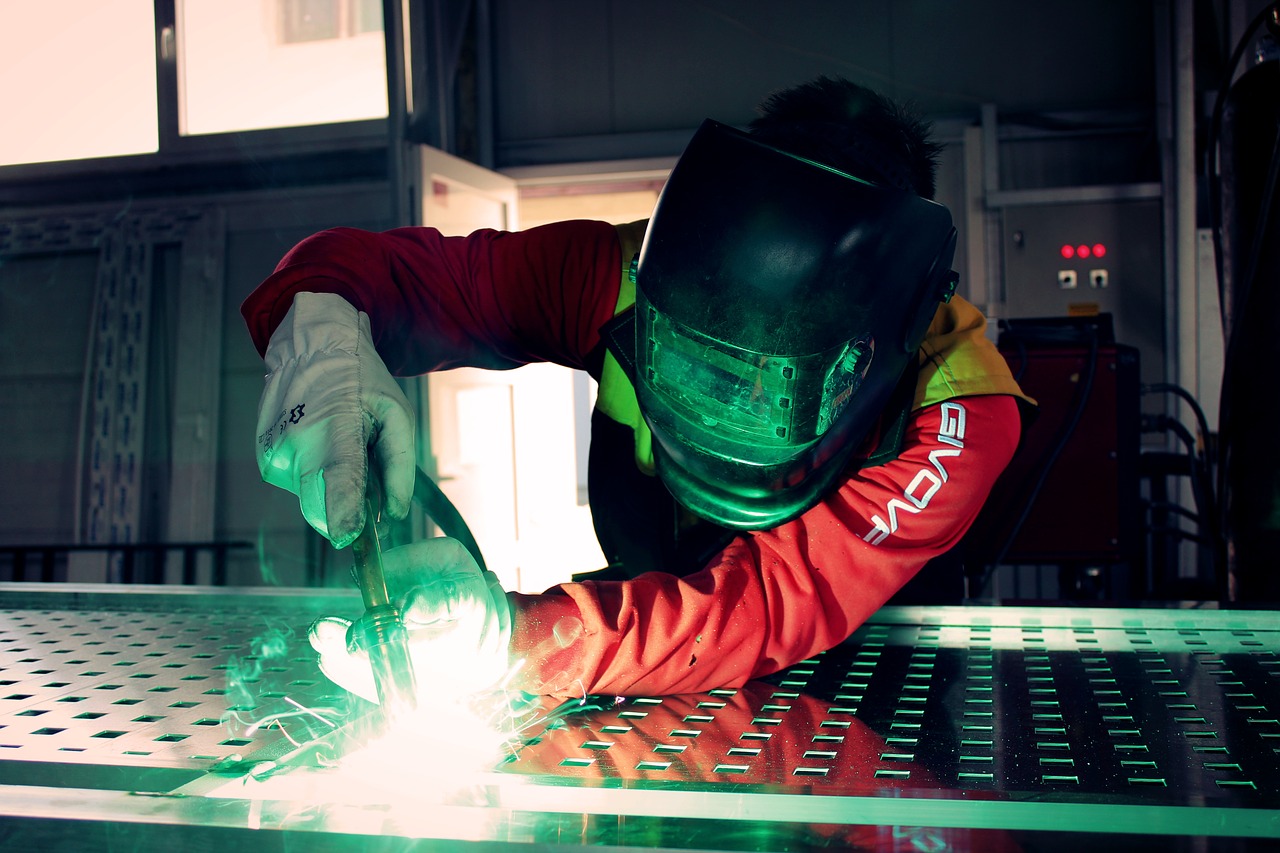Everything about Welding: Key Insights Into Techniques and Best Practices for Success
Welding encompasses a range of methods, each fit for certain products and applications. Comprehending these techniques, such as GMAW, SMAW, and TIG, is necessary for attaining excellent results. The ideal devices and safety practices can not be overlooked. As prep work and fixing play vital roles in the welding process, mastering these components can greatly boost the top quality of the last item. What are the vital variables that ensure a successful weld?
Recognizing Various Welding Methods
Welding techniques encompass a selection of approaches, each fit to particular applications and materials. Amongst the most typical techniques are Gas Steel Arc Welding (GMAW), Protected Steel Arc Welding (SMAW), and Tungsten Inert Gas Welding (TIG) GMAW, likewise called MIG welding, is preferred for its speed and convenience, making it excellent for thin products. SMAW, or stick welding, is favored for its simplicity and performance in exterior atmospheres, specifically with thicker metals. TIG welding uses precision and control, making it ideal for elaborate job and non-ferrous metals (Welding). Each method has its distinct benefits and considerations, enabling welders to pick the best technique based upon the project's demands, material kind, and wanted outcomes. Comprehending these strategies is necessary for successful welding
Vital Welding Tools and Devices
While various welding strategies need details skills, the appropriate tools and devices are equally vital for accomplishing top quality outcomes. Crucial welding equipment includes welding devices, which vary depending on the technique-- such as MIG, TIG, or stick welding. Protective gear, including handwear covers, helmets, and aprons, warranties safety and security and convenience throughout the procedure. On top of that, clamps and components help secure materials in place, guaranteeing accuracy in welds. Consumables like welding rods, wire, and shielding gas are additionally important elements that influence the quality of the weld. Tools such as grinders and cutters assist in surface preparation and post-weld finishing, adding to a professional outcome. Purchasing top quality tools ultimately improves the effectiveness and effectiveness of welding tasks.
Security Practices in Welding
Proper safety and security methods are necessary in the welding industry to shield workers from potential threats. Welders need to wear ideal individual protective equipment (PPE), consisting of headgears with appropriate shading, gloves, and flame-resistant clothing. Sufficient ventilation is vital to decrease exposure to unsafe fumes and gases produced during the welding process. In addition, workers must be learnt the right handling of welding equipment to stop mishaps. Fire safety procedures, such as maintaining flammable products far from the welding area and having fire extinguishers easily available, are essential. Normal examinations of equipment and work spaces can help identify possible threats before they cause crashes. By sticking to these security techniques, welders can create a safer working atmosphere and reduce threats connected with their trade.
Readying Materials for Welding
Preparing materials for welding is a vital action that greatly influences the top quality and integrity of the end product (Welding). Proper prep work includes cleaning up the surfaces to remove contaminants such as rust, oil, and dirt, which can endanger the weld. Methods such as grinding, sanding, or utilizing solvents are generally used to accomplish a tidy surface area. Furthermore, ensuring that the products fit with each other well is crucial; voids can bring about weak welds. It's additionally vital to consider the positioning and positioning of the elements, as this will affect the convenience of welding and the last result. Ultimately, choosing the suitable filler material and ensuring compatibility with the base steels is crucial for attaining strong, resilient welds
Tips for Getting High-Quality Welds
Accomplishing high-quality welds calls for attention to information and adherence to best practices throughout the welding process. Correct joint preparation is vital, making sure surfaces are tidy and free from contaminants. Picking the appropriate filler product and welding method based upon the base steels is critical for perfect bonding. Preserving regular traveling rate and angle while welding can avoid problems and advertise uniformity. Additionally, controlling warm input is necessary; excessive heat can cause bending and damaged joints. If essential, routinely examining the welds during the process permits for prompt changes. Employing suitable post-weld therapies, such as cleansing and anxiety alleviation, can improve the longevity and integrity of the weld, eventually guaranteeing an effective outcome.
Troubleshooting Common Welding Issues
Welding straight from the source frequently offers obstacles that can impact the quality and integrity of the end product. Usual concerns such as porosity, irregular weld beads, and getting too hot can develop, each needing specific fixing techniques. Understanding these troubles is important for welders to enhance their skills and achieve excellent results.
Porosity Troubles Described
Although porosity can usually be forgotten, it stays an essential issue in welding that can compromise the stability of a completed product. Porosity refers to the visibility of little gas pockets within the weld grain, which can lead and deteriorate the joint to early failing. This issue commonly emerges from impurities, moisture, or improper shielding gas protection during the welding process. To reduce porosity, welders need to validate that the base products are dry and clean, use suitable protecting gases, and keep constant welding specifications. On a regular basis evaluating the tools and setting can additionally assist identify possible issues before they show up in the weld. Resolving porosity effectively is vital for achieving solid, long lasting welds that fulfill high quality criteria.

Irregular Weld Beads
Irregular weld beads can greatly influence the high quality and strength of an ended up item. Various variables add to this issue, consisting of incorrect travel rate, incorrect amperage setups, and inconsistent electrode angles. When the welder moves as well swiftly, a bead may show up slim and do not have penetration, while moving as well slowly can cause too much buildup. Additionally, making use of the incorrect amperage can cause either undercutting or excessive spatter, both of which concession weld stability. The welder's strategy, such as inconsistent lantern activity, can also result in unequal bead appearance. To minimize these troubles, welders must focus on maintaining stable, controlled activities and making certain appropriate equipment setups to accomplish harmony in their welds. Uniformity is vital to achieving trusted and strong welds.
Overheating and Bending Issues
Extreme warmth during the welding process can cause considerable overheating and contorting concerns, affecting the structural honesty of the workpiece. These troubles frequently show up as distortion, which can jeopardize placement and fit-up, making more setting up testing. Factors contributing to overheating consist of the option of welding specifications, such as voltage and take a trip speed, along with the my website kind of material being bonded. To alleviate these concerns, welders must keep regular traveling speed and proper warm input while checking the workpiece temperature. Additionally, pre-heating or post-weld warmth therapy can help reduce anxieties brought on by quick air conditioning - Montana Mobile Welding and Repair. Normal evaluation and adherence to ideal methods are crucial in protecting against overheating and ensuring the long life and reliability of bonded structures
Often Asked Concerns
What Are the Occupation Opportunities in the Welding Industry?
The welding sector offers diverse profession chances, consisting of positions as welders, examiners, designers, and educators. Professionals can operate in manufacturing, building and construction, aerospace, and automotive industries, benefiting from solid demand and affordable salaries in numerous duties.
How Can I Enhance My Welding Speed Without Sacrificing High Quality?
To enhance welding rate without giving up top quality, one should exercise efficient strategies, maintain tools, enhance setups, and boost hand-eye control. Routine training and looking for responses can additionally substantially add visit the website to attaining faster, high-grade welds.
What Qualifications Are Available for Welders?
Various qualifications exist for welders, including those from the American Welding Society (AWS), the National Facility for Building And Construction Education and Research Study (NCCER), and numerous industry-specific organizations. These credentials improve employability and show skill proficiency.
How Does Welding Affect the Characteristics of Metals?
Welding influences the homes of steels by modifying their microstructure, which can bring about changes in ductility, solidity, and toughness. Heat input and cooling rates throughout the process greatly affect these material qualities.
Can I Bonded Dissimilar Metals Together?
